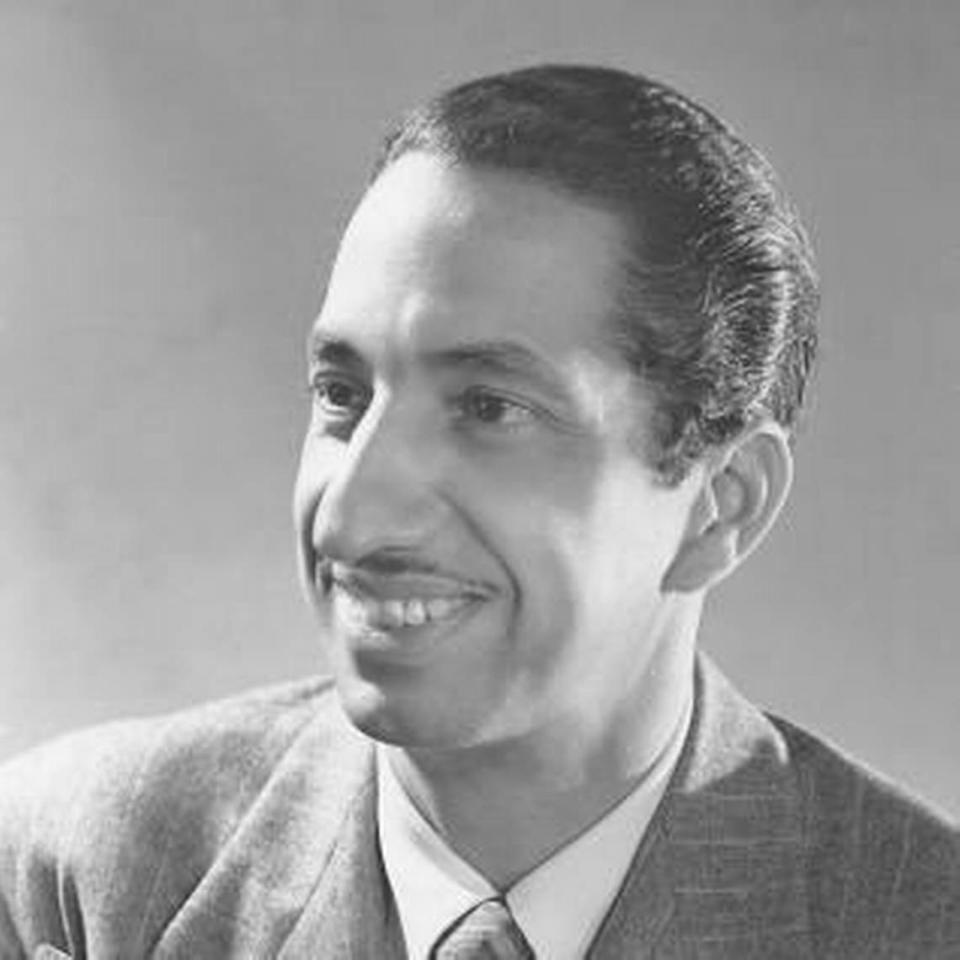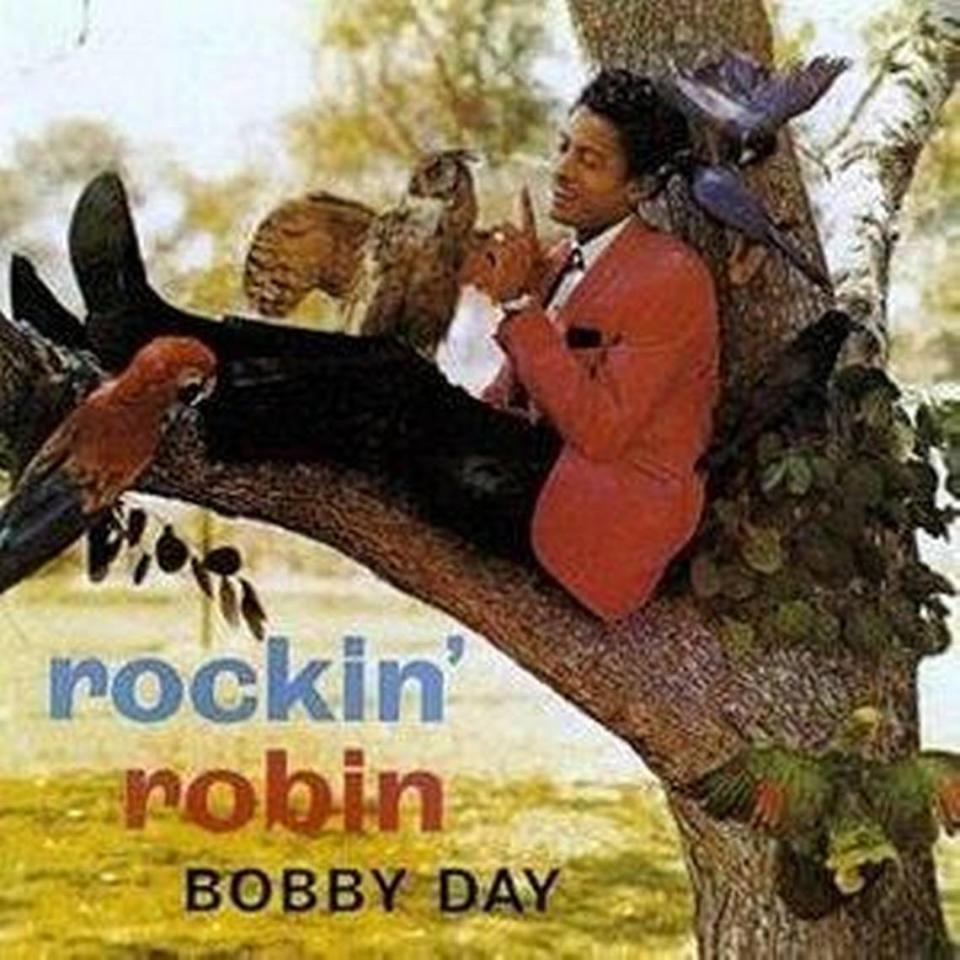‘Rockin’ Robin’ hit No. 2 in 1958. The man who wrote and sang it was from Fort Worth.
Fort Worth has produced more than its share of pop music talent over the decades, including Milton Brown, Delbert McClinton, T-Bone Burnett, Ornette Coleman, and King Curtis. Several of those hit makers came out of I.M. Terrell, a segregated high school that was a wellspring of Black talent.
One I.M. Terrell graduate was Robert James Byrd Sr. Never heard of him? How about Bobby Day? They are the same person. Bobby Day was the stage name of the artist who made “Rockin’ Robin” a No. 2 national hit in 1958.
Day was born in Fort Worth on July 1, 1928. Little is known of his life before he went to I.M. Terrell. Years later, he told Star-Telegram columnist Roger Kaye that he graduated at the age of 15, making him “one of the youngest graduates in the history of the high school.”
He got a music scholarship to Prairie View A&M and attended for a time but found things “tough” (his word), so he took off to California, settling in Los Angeles and enrolling in UCLA. It was there that he started writing songs in the emerging rhythm and blues (R&B) style, known at the time as “race music.”
He lived in Watts, the segregated Black section of L.A. and became part of the dynamic music community centered there. With Earl Nelson, he formed a group they called the Hollywood Flames in 1949. He wrote and recorded his first song with them, “Young Girl.” They became popular on the local club scene and got airplay on Art Laboe’s nightly radio show, which helped them put some minor hits on the R&B charts (separated by the recording industry from the pop charts). Day also wrote and produced the group’s first hit, “Buzz, Buzz, Buzz,” which reached the Top 10 on the R&B charts in 1957. They followed that with “Crazy,” which he also wrote. He and Nelson also performed as Bob and Earl, scoring with another Day-composed song, “Gee Whiz.”
In 1957, he went solo, though the Hollywood Flames continued to back him. They also toured on their own for years. He signed first with Aladdin Records then later with Class Records. Day had a feel for what the new rock and roll audience wanted and wrote songs in the doo-wop style that appealed to white and Black teens alike. He wrote and recorded three songs in the next two years that became big hits: “Little Bitty Pretty One,” backed with “Over and Over,” and “Rockin’ Robin.” He took the two-sided hit to No. 1 on the R&B charts.
“Little Bitty Pretty One,” written about his wife, was also a huge hit but not for him. His version stalled at No. 58 on the R&B charts while Thurston Harris’ cover became a breakout hit, making the jump from the R&B charts (No. 2) to the Pop charts (No. 6). Harris’ version benefited from him being invited to perform on Dick Clark’s American Bandstand TV show. It went on to become a standard, covered by everyone from the Dave Clark Five to the Jackson 5 to Huey Lewis & the News. “Over and Over” also had legs. It was a hit for the Dave Clark 5 in 1965. The Hollies were another British Invasion group that tapped Day’s catalog for hits in the next decade.
“Rockin’ Robin” was co-written with Leon Rene, the head of Class Records. The two were writing another song at the time when they heard the birds singing outside their window. As Day explained later, the only bird name they could think of that scanned was the robin. That’s how the song was born.

“Rockin’ Robin” was Class Records’ biggest hit, and it got Day an appearance on American Bandstand, which was a ticket to fame for performers He recorded his first studio album in 1959, which included both “Little Bitty Pretty One” and “Rockin’ Robin.”
Day’s last charting record was “Gotta New Girl” (1959), which was a minor hit on the R&B charts. He spent the years after that touring with other R&B acts like Johnny Otis and Marv Johnson, who was picked up by Motown. Day was promoted as both a singer and bandleader. He found an appreciative audience in Australia and the United Kingdom, but his star had set in the U.S. In 1983, he returned to Fort Worth to play the Ricochet Room in the Americana Hotel backed by his old group, the Hollywood Flames.

Bobby Day died of cancer at the age of 62 on July 27, 1990, in Los Angeles. He had entered the hospital 12 days earlier with an ulcerative condition and never left. He was still touring the oldies circuit with the likes of Tiny Tim almost up to the end. Yet he was largely a forgotten man except for aficionados of R&B. His burial in L.A.’s Holy Cross Cemetery attracted only a small group of mourners.
Karen Castillo, a member of his managing firm, offered the best eulogy: “He wasn’t one of these kids that popped up and got lucky. He was extremely talented. ... His rhythm and blues voice was dynamic and captivating.” His obituaries around the country got many facts wrong. The Associated Press even made an embarrassing mistake, putting out a photograph of white country-western singer Bobby Day with the press release announcing his death. When the error was pointed out, they had to issue a correction.
He was survived by his wife Jackie and four children. His catalog was controlled for years by L.A.’s Aladdin Records, then eventually taken over by EMI Record Group. There is little chance of him being inducted into the Rock and Roll Hall of Fame, but he adds to the luster of Fort Worth’s musical heritage.
Author-historian Richard Selcer is a Fort Worth native and proud graduate of Paschal High and TCU.

